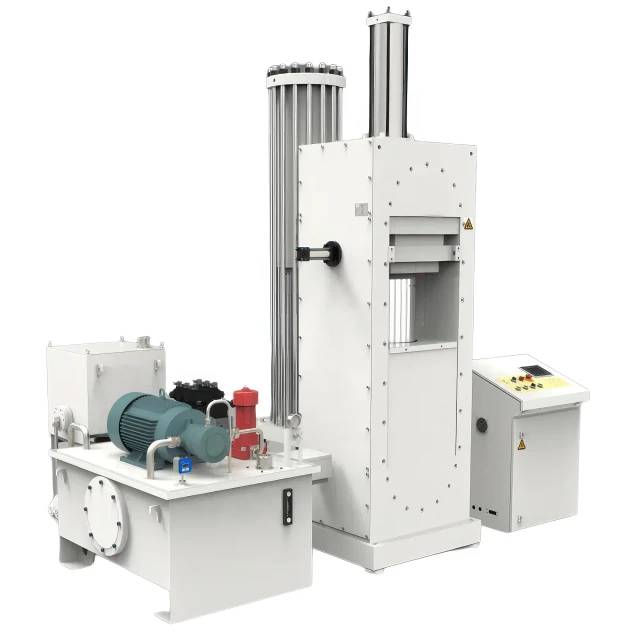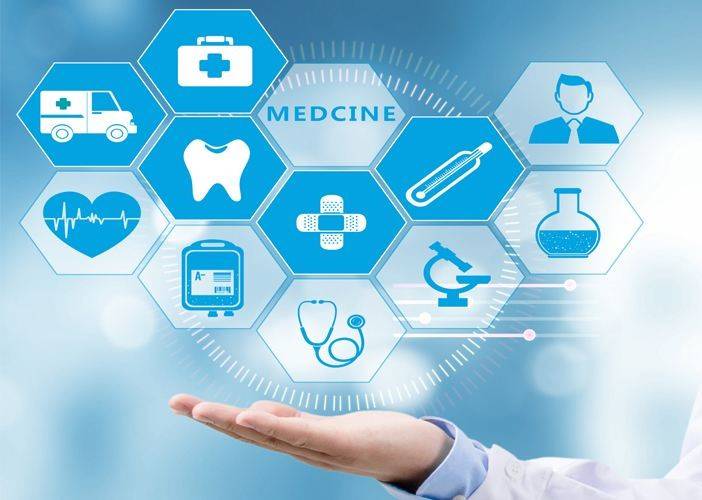Introduction
Cold Isostatic Pressing (CIP) is a process used to compact and densify powders, ceramics, and metals. This process uses high-pressure fluids, usually water or oil, to apply uniform pressure to the material from all directions. CIP is widely used in various industries, including aerospace, automotive, and medical applications. In medical applications, CIP is used to manufacture implants, prosthetics, and other medical devices. Despite its advantages, the use of CIP in medical applications presents several challenges, including the risk of contamination and the difficulty of achieving precise geometries. However, through the use of advanced technologies, researchers are finding solutions to overcome these challenges.
Table of Contents
What is Cold Isostatic Pressing?
Cold Isostatic Pressing (CIP) is a process used to create high-density, uniform materials that are used in various applications, including medical implants. It works by applying pressure to a powder or preform in a fluid medium, typically water. The process is particularly useful for creating complex shapes that would be difficult or impossible to create using conventional manufacturing techniques.
CIP is a method of processing materials that functions based on a principle proposed by Blaise Pascal. This principle is popularly known as Pascal's law, and it states that pressure applied to an enclosed fluid is transmitted throughout the fluid without any change in the magnitude of the pressure.
There are two types of CIP recognized worldwide: Wet Bag Technology and Dry Bag Technology. Wet Bag technology is a process where the powder is filled in a mold and sealed tightly outside the pressure vessel. After filling the mold with powder, it is then submerged in the pressure fluid within the pressure vessel, and then isostatic pressure is applied to the external surface of the mold, compressing the powder into a solid mass. Dry Bag Technology is a process where the mold is fixed in the pressure vessel, and the powder is filled in the mold while still in the pressure vessel. After this, isostatic pressure from the pressure liquid is applied to the external surface of the mold, compressing the powder into a solid mass with a compact microstructure.
The cold isostatic pressing process is particularly useful for creating complex shapes that would be difficult or impossible to create using conventional manufacturing techniques. One of the primary challenges associated with CIP for medical applications is ensuring that the final product is free of defects and has a uniform density throughout. This requires careful control of the pressure and temperature during the process, as well as careful selection of the materials used in the process.
For medical applications, the final product must be biocompatible and must not cause an immune response or other adverse reactions in the patient's body. To overcome these challenges, researchers and manufacturers are developing new techniques and materials for CIP. For example, some researchers are exploring the use of nanomaterials and other advanced materials to create more uniform and biocompatible products. Others are developing new techniques for controlling the pressure and temperature during the process to achieve greater control over the final product.
In conclusion, CIP is an important manufacturing technique for creating high-quality, complex materials for medical applications. While there are challenges associated with the process, researchers and manufacturers are working to overcome these challenges and improve the quality and consistency of CIP products for use in medical implants and other applications.
Applications of Cold Isostatic Pressing
The cold isostatic pressing (CIP) process is widely used in the medical industry due to its ability to produce complex shapes with high precision, excellent mechanical properties, and biocompatibility. Here are some of the applications of CIP in the medical field:

Orthopedic and Dental Implants
CIP is used to manufacture orthopedic and dental implants due to its ability to produce high-density parts with excellent mechanical properties. The process allows for the production of implants with complex shapes and sizes, making it ideal for customized implants that suit individual patients' needs.
Surgical Instruments
CIP is also used in the production of surgical instruments. The process allows for the production of instruments with high precision and accuracy, making them suitable for use in delicate surgical procedures.
Biomedical Devices
CIP is used to manufacture biomedical devices such as drug delivery systems, prosthetics, and diagnostic tools. The process allows for the production of devices with complex shapes and sizes, making it suitable for customized devices that suit individual patients' needs.
Tissue Engineering
CIP is used in tissue engineering to develop scaffolds that support the growth of new tissues and organs. The process allows for the production of scaffolds with high porosity and interconnected pore structure, making it suitable for tissue engineering applications.
In conclusion, CIP is a versatile manufacturing process that has numerous applications in the medical industry. Despite the challenges associated with its use in medical applications, ongoing research and development are needed to address these challenges and further expand its applications in the field.
Advantages of Cold Isostatic Pressing
Cold Isostatic Pressing (CIP) is a popular technique used in the medical industry for the production of various medical devices. Below are some of the advantages of using CIP:
Uniform Strength
Since the pressure applied during the CIP process is equal in all directions, the material produced has uniform strength. Materials with uniform strength are generally more efficient and reliable than those without.
Versatility
CIP is highly versatile and can be used to produce complex shapes that cannot be produced using other methods. Additionally, it can be used to produce large-sized materials. The only limitation to the size of materials produced by this method is the size of the pressure vessel.
Corrosion Resistance
Cold isostatic pressing improves the corrosion resistance of a material, making it a valuable technique for creating medical devices that require resistance to corrosion. Materials that undergo this process have a longer lifespan than most other materials.
Mechanical Properties
The mechanical properties of cold isostatic pressed materials are improved. Some of the properties improved include ductility and strength.
Precision and Repeatability
CIP offers a high degree of precision and repeatability, making it an ideal process for creating medical devices that require tight tolerances. This process can produce materials that are biocompatible and resistant to corrosion, which is essential for medical applications where the device will be used inside the human body.
Ability to Create Complex Shapes
CIP can create complex shapes that are difficult or impossible to produce using other methods. This technique allows for the production of intricate shapes with high precision and repeatability.
High Strength and Durability
CIP produces materials with high strength and durability. These materials are resistant to wear and tear, making them ideal for medical devices that undergo frequent use.
Excellent Surface Finish
CIP produces materials with an excellent surface finish. This process can create materials with a smooth surface that is free from defects and imperfections.
Overall, the advantages of CIP make it a valuable technique for creating high-quality and reliable medical devices. While there are challenges associated with using CIP, such as the high cost of equipment and complex manufacturing processes, the benefits of this technique far outweigh the challenges.

Challenges of Using Cold Isostatic Pressing in Medical Applications
Cold Isostatic Pressing (CIP) is a process used to compress and consolidate powdered materials into a solid form. Although it has been widely used in various industries, including aerospace, automotive, and electronics, using CIP in medical applications poses some challenges.
Need for High Precision and Control of Process Parameters
One of the main challenges of using CIP in medical applications is the need for high precision and control of the process parameters, such as pressure, temperature, and time. Medical devices need to meet strict standards and regulations, and any deviation from these standards can compromise the safety and effectiveness of the device. In CIP, the pressure can reach as high as 100,000 psi, which requires precise control to ensure consistent results.
Potential for Contamination
Another challenge of using CIP in medical applications is the potential for contamination during the process. The materials used in medical applications must be free from impurities and contaminants, which can be difficult to achieve when using CIP. The liquid medium used in CIP, often an oil-water mixture, can also introduce contaminants into the final product, which can affect the biocompatibility of the device.
Deformation or Cracking of Materials
The high pressures used in CIP can cause deformation or cracking of the materials, which can affect the structural integrity of the device. Medical devices require high strength and durability, and any defects or flaws can compromise the performance of the device. Achieving the desired shape and size of the device without deformation or cracking can be challenging, especially when using complex geometries.
Solutions to Overcome Challenges
To address the challenges associated with using CIP in medical applications, researchers are exploring new techniques and materials. One solution is to use biodegradable polymers and nanomaterials that are more compatible with the human body and do not require high pressures during the CIP process. Another solution is to develop new methods for monitoring and controlling the CIP process to ensure precise and consistent results. Additionally, using advanced equipment and technology can help reduce the potential for contamination and minimize deformation or cracking of the materials.
In conclusion, while there are challenges associated with using CIP in medical applications, researchers and manufacturers in the medical field are exploring new techniques and materials to overcome these challenges. By developing new methods for monitoring and controlling the CIP process and using advanced equipment and technology, the potential benefits of using CIP in medical applications, such as cost-effectiveness and improved device performance, make it an attractive option for medical device manufacturing.
Solutions to Cold Isostatic Pressing Challenges
Cold Isostatic Pressing (CIP) is a widely used technique in the medical industry to manufacture high-quality, complex-shaped components and parts. However, the process poses some challenges that need to be addressed to achieve the desired results. Here are some solutions to overcome these challenges:
1. Specialized Tooling
One of the significant challenges in the CIP process is achieving uniform pressure distribution during the pressing process. This can lead to the formation of defects and inconsistencies in the final product. To address this issue, specialized tooling is used to ensure uniform pressure distribution. The tooling is designed to provide equal pressure to all surfaces of the sample, resulting in a uniform density with low entrapped stress.
2. Optimization of Pressing Parameters
Optimizing the pressing parameters is another solution to overcome the challenges of the CIP process. The pressing parameters, including temperature, pressure, and duration, are adjusted to achieve the desired results. The optimization process involves a series of experiments to identify the optimal conditions for the specific material being processed. The process can result in higher quality products with fewer defects.
3. Cleanliness Protocols
Contamination during the pressing process can compromise the quality of the final product. To overcome this, strict cleanliness protocols are implemented. The equipment is regularly cleaned and maintained to ensure that there is no contamination during the process. This helps to ensure that the final product is of high quality and free from contaminants.
4. Advanced Materials
Advancements in technology have led to the development of advanced materials with improved properties. These materials can withstand the pressures and temperatures involved in the CIP process. The use of advanced materials ensures that the final product is of high quality and meets the required specifications.
5. Computer Modeling and Simulation
Computer modeling and simulation techniques have been developed to optimize the CIP process. The use of computer modeling and simulation provides greater accuracy and control, resulting in higher quality products. This process involves a series of simulations to identify the optimal conditions for the specific material being processed.
In conclusion, the CIP process poses some challenges that need to be overcome to achieve the desired results. The solutions to these challenges include specialized tooling, optimization of pressing parameters, cleanliness protocols, advanced materials, and computer modeling and simulation. These solutions have been developed to ensure that the final product is of high quality and meets the required specifications.

Conclusion
Cold Isostatic Pressing (CIP) is a valuable process in the medical industry, especially with the increasing demand for high-quality medical devices and implants. However, the use of CIP in medical applications presents several challenges, including the need for biocompatible materials, the risk of contamination, and the need for high-pressure equipment. Despite these challenges, there are solutions available to overcome them, including the use of specialized coatings, proper cleaning and sterilization procedures, and the development of new equipment designs. By addressing these challenges, CIP can continue to be a reliable and effective method for producing high-quality medical products.
Related Products
- Cold Isostatic Pressing Machine CIP for Small Workpiece Production 400Mpa
- Electric Lab Cold Isostatic Press CIP Machine for Cold Isostatic Pressing
- Manual Cold Isostatic Pressing Machine CIP Pellet Press
- Automatic Lab Cold Isostatic Press CIP Machine Cold Isostatic Pressing
- Warm Isostatic Press for Solid State Battery Research
Related Articles
- Zirconia Ceramic Rod Production Processes: Isostatic Pressing vs. Dry Pressing
- What is Isostatic Pressing Machine
- Comprehensive Guide to Isostatic Pressing: Types, Processes, and Features(3)
- Isostatic Pressing Technology: Principles, Classification, and Applications
- Understanding Isostatic Pressing: Process, Benefits, Limitations, and Applications















